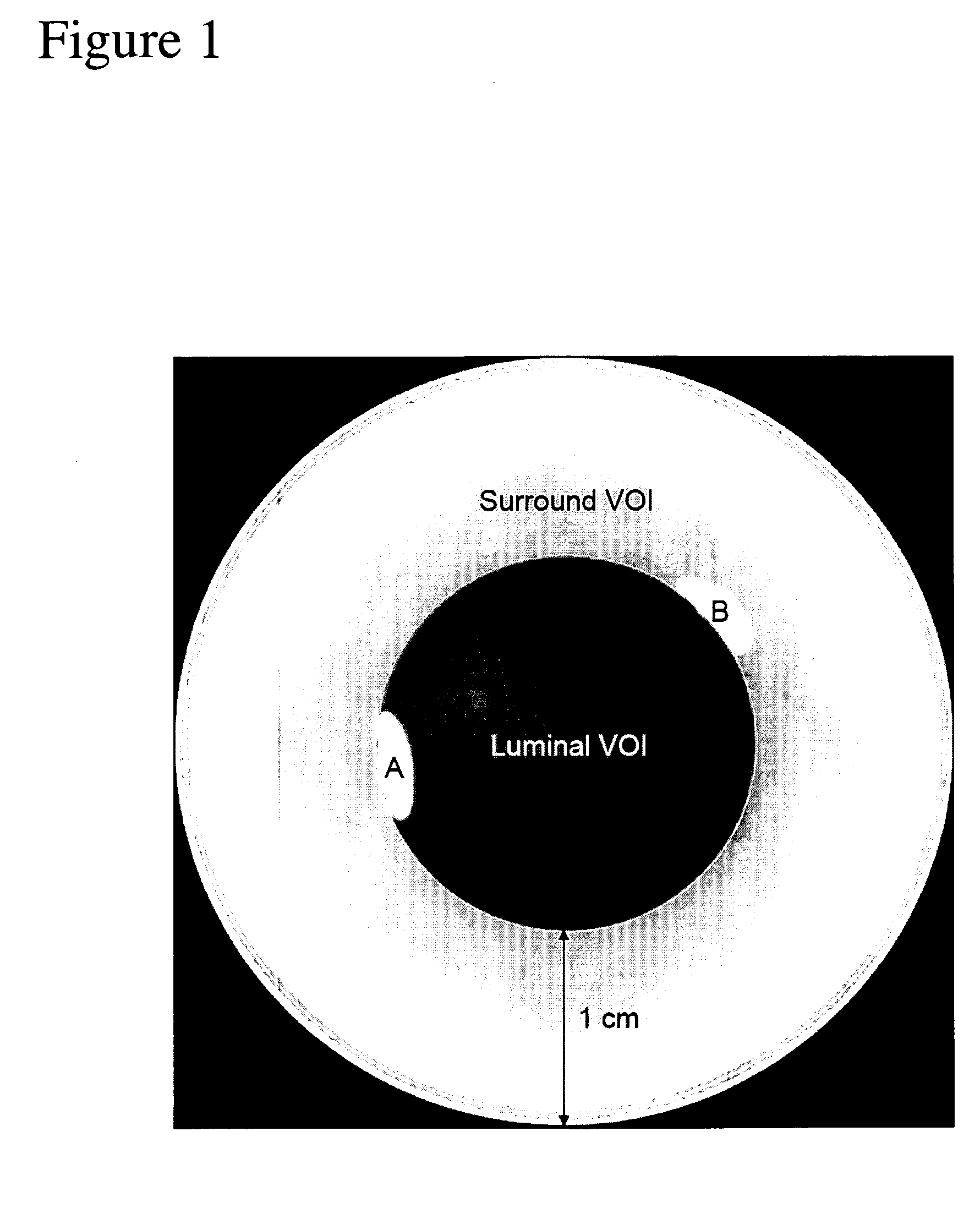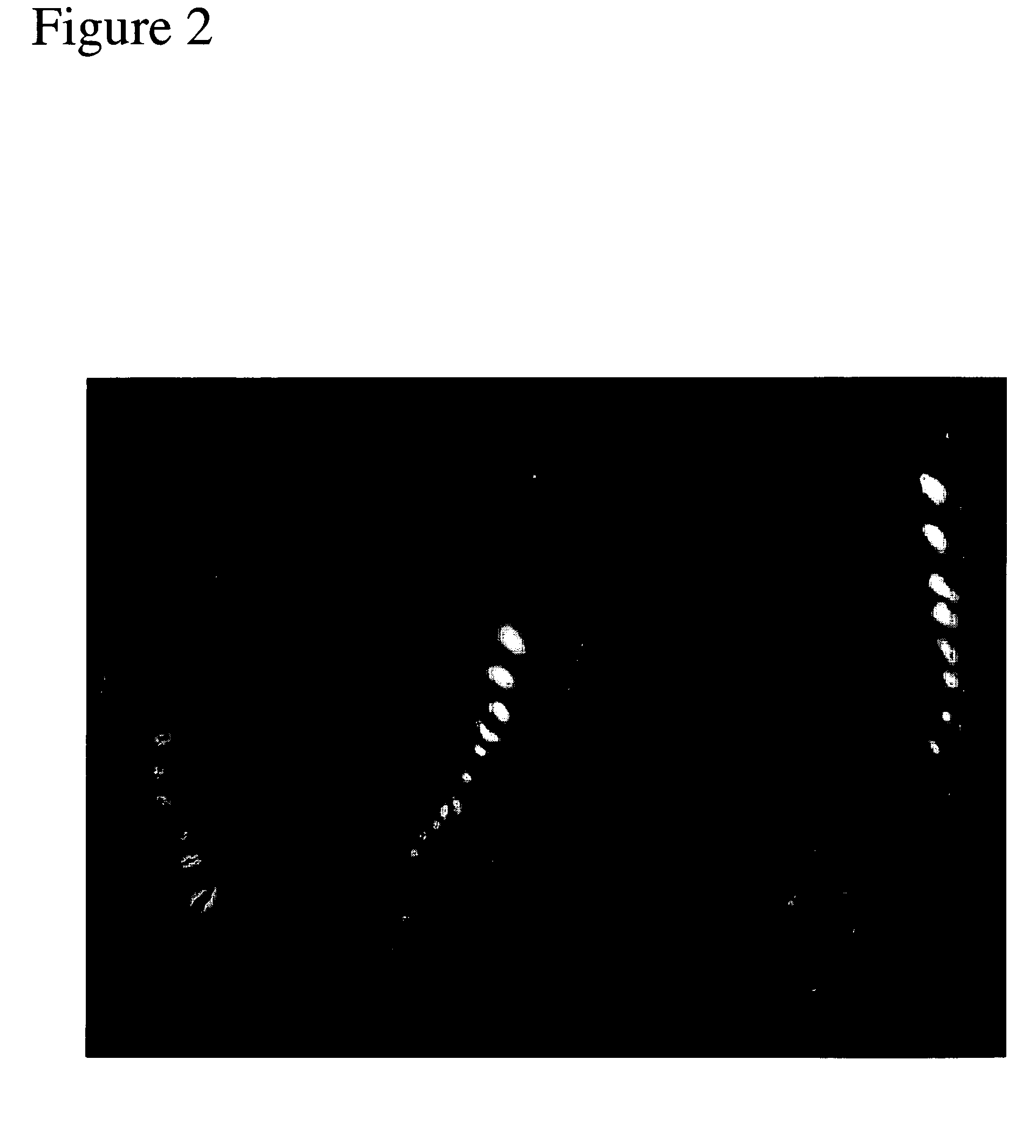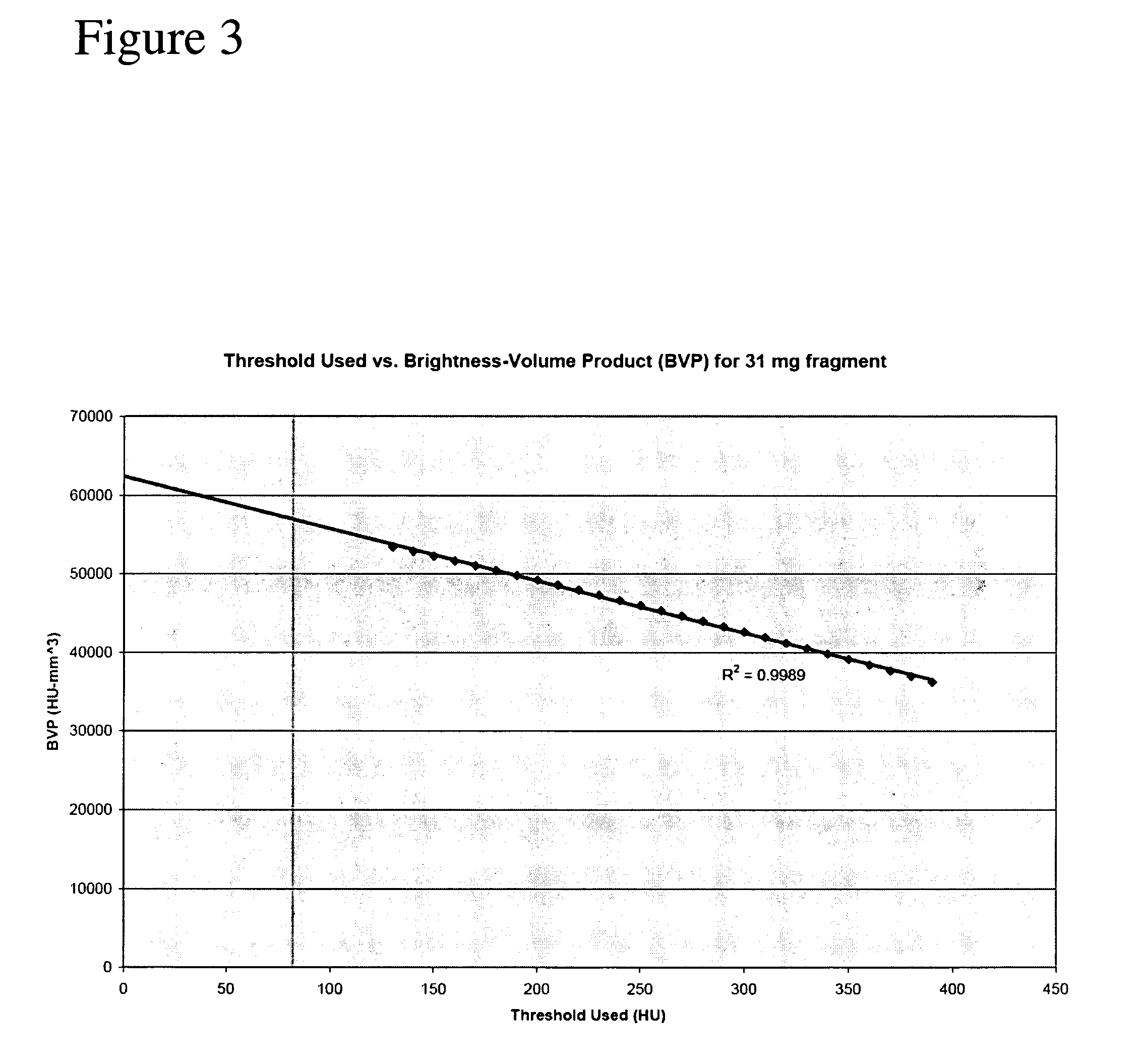Quantification method of vessel calcification
a calcification and quantitative technology, applied in the field of medical imaging, can solve the problems of reducing the accuracy of mass-quantification, not including a detailed analysis of the shape, size and distribution pattern of calcium fragments, and increasing the incidence of intermittent claudication symptoms
- Summary
- Abstract
- Description
- Claims
- Application Information
AI Technical Summary
Benefits of technology
Problems solved by technology
Method used
Image
Examples
Embodiment Construction
[0016]The present method requires either two-dimensional images or three-dimensional volume data sets acquired via computed tomographic angiography, MR imaging, or the like. The image(s) include(s) one or more vessels of interest that one would like to identify. Identification could for instance be accomplished by identifying the start and end-points of the vessel(s) of interest. In a preferred embodiment for vessel identification the bony structures are excluded from the image. A previously developed method by the same group as the present invention is suitable (i.e. U.S. patent application Ser. No. 10 / 723,166 with filing date of Nov. 26, 2003 which is hereby incorporated by reference for all that it discloses). This method is preferred and capable of removing structures that possess the shape and intensity distribution characteristic of bone. The resulting image is left with vessel structures from which median centerlines can be obtained (See Paik et al. 1998 in a paper entitled “...
PUM
 Login to View More
Login to View More Abstract
Description
Claims
Application Information
 Login to View More
Login to View More - R&D
- Intellectual Property
- Life Sciences
- Materials
- Tech Scout
- Unparalleled Data Quality
- Higher Quality Content
- 60% Fewer Hallucinations
Browse by: Latest US Patents, China's latest patents, Technical Efficacy Thesaurus, Application Domain, Technology Topic, Popular Technical Reports.
© 2025 PatSnap. All rights reserved.Legal|Privacy policy|Modern Slavery Act Transparency Statement|Sitemap|About US| Contact US: help@patsnap.com



